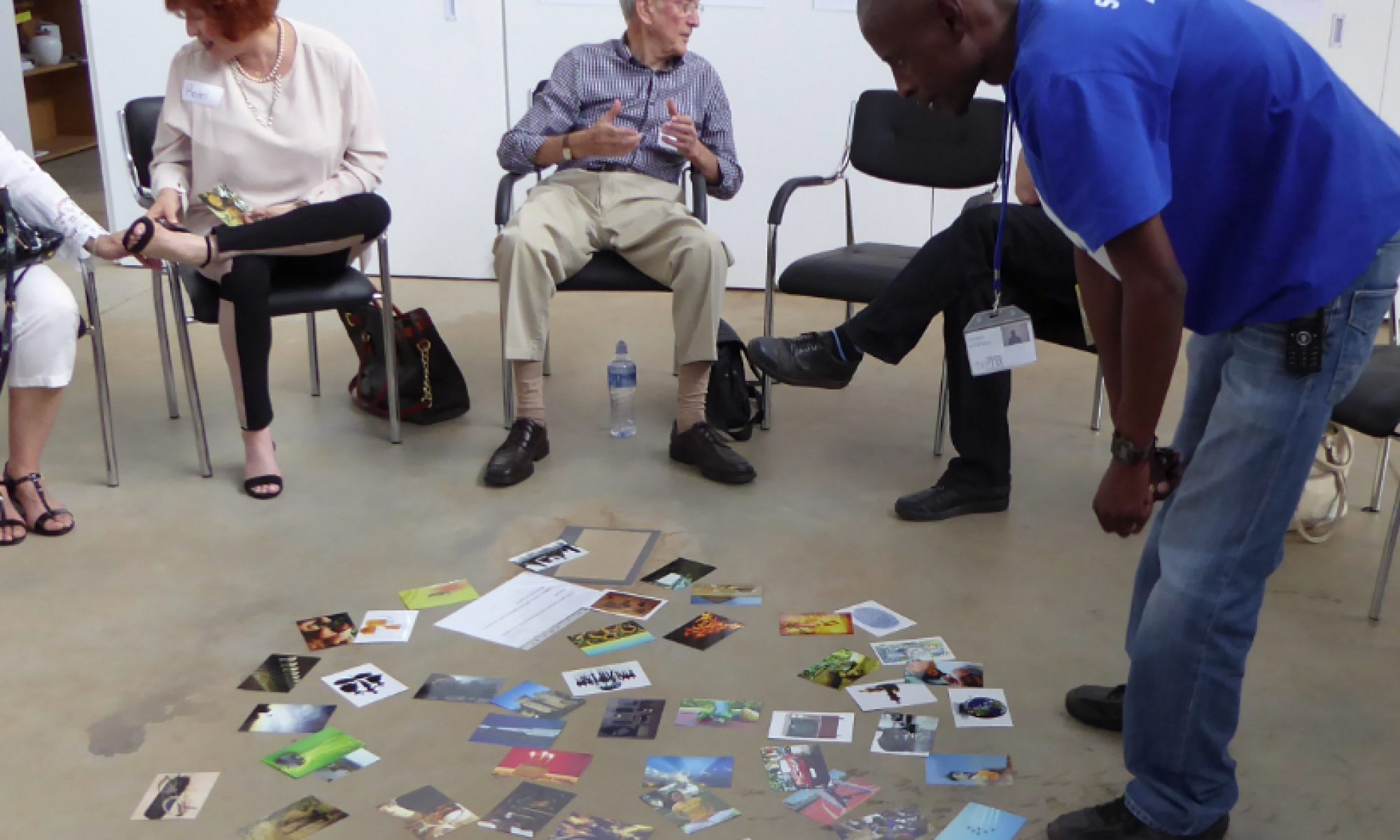The need for story and embodiment in leadership training and development
In a VUCA world that is Volatile, Uncertain, Complex and Ambiguous, where change is increasing exponentially, people feel overwhelmed, unsafe and resistant to more change. Their brains react with threat responses: wanting either to fight (I will not comply), flee (I will avoid it) or freeze (I don’t know what to do), and so we disconnect (Leave me alone).
Yet as organisational development practitioner, coach, change manager, leader and facilitator, you know that shift is not just inevitable, it is desirable. How do you get your people to shift with the shifting times?
In order to thrive in such a world we need to be more adaptive, innovative, engaged and integrated. To achieve this, the brain must function optimally, not in survival mode but in creative mode.
Yet audiences, trainees, participants and teams have become more and more distracted, demanding and opinionated. Some are resistant to new input and tired of change. Others want highly customised, personalised and individually relevant input.
We need new moves to move the people we serve.
Lectures where information is simply transmitted, like feel-good motivational talks, and games like paintball and potjiekos competitions (team cook-ups), all lack one or both of the essential ingredients for programmes that maximise the potential for shifting your clients or participants. These two essential ingredients are learning design and creative participation.
Learning design is the art of turning information into a carefully sequenced and well-crafted learning experience. Here the content does not dictate the design, but the facilitator decides how best to shape the content so that people accept it. Often stories, pictures, audio-visual stimuli, like props and videos and interactive techniques, are employed to unfold the material and enliven the presentation. Speakers, trainers and teachers who add this component to their material significantly increase the potential for shift to happen, since it creates more brain connections for participants and draws them into the ‘story in the room’ (the content presented).
Creative participation is the art of creating structures that invite participants to contribute their ideas, thoughts and actions to the material. This kind of experiential process allows participants to bring their own ingenuity to the conversation and discover tacit knowledge that they did not know they had. Programmes and interventions that use games, interactive processes, conversations and liberating structures also greatly enhance the potential for shift, since people are able to connect their own stories to the story in the room.
With the explosion of the internet, everyone can be an expert, everyone can personalise and customise their programmes, profiles and preferences and everyone can choose what information they want to allow in their headspace. In addition, given the shaky state of world economies and the uncertainty created by political shifts and health threats, people are increasingly weary of solutions that would waste money or cause more uncertainty.
Lectures
Old-fashioned lecturing does not work any more. On the one hand, lectures are content-driven and the content dictates the design and flow of the presentation. On the other hand, the content tries to be a one-size-fits-all solution that is not customisable and adaptable for every individual particularity. Furthermore, lectures do not leverage the power of human connection and emotion as a way to drive messages home and make them ‘stickable’.

Shows
Motivational speakers liven up presentations by turning them into more of a show. Through showmanship they artfully present their content using stories, emotion and clever presentational gimmicks like props, visual aids and performance skills. In addition, motivational speakers are high-impact but low in time investment. And while the really good speakers are expensive for the time they put in, a once-off payment is still cheaper than a process that unfolds over time and consumes both time and money.
Yet traditional motivational speakers cannot bring about shift that lasts. They get a high rating from people attending their talks, but a very low rating in terms of creating real shift. What is lacking is the ability to help people connect their own individual stories to the story in the room. A grand show still offers a one-size-fits-all solution that cannot shift the individual. Many may enjoy it, but only 5% will experience something like shift.
Games
Team-building exercises and gamification programmes step into this gap by offering game-like solutions. A game is not meaning-driven, it is structure-driven. Within the confines of the game, people have some control to manipulate the rules to their advantage. A game can be individualised. A physical game, like soccer, is also good for connecting people and building relationships, something that often enhances emotional connection by awakening competitiveness or by leveraging people’s feeling of belonging. However, unless games are structured around meaning that can bring about change, people often leave a team-building experience feeling ‘warm and fuzzy’ but without a lasting shift that will be seen in the workplace.

Shift
If lectures, shows and games do not offer lasting solutions that can bring about shift, there must be a fourth option – and that is a solution we simply term Shift. For Shift to occur the talk, workshop or intervention must both be designed for learning to happen and involve participants’ creative participation. This means there is maximum potential for understanding the material as well as for participants to apply it to their own contexts and contribute to creating meaning and significance.
When you want to increase the potential for Shift to happen, story-strategy helps you retain perspective of the big picture while improvisation skills help you navigate your actions in the moment. Between the two, you create the conditions for Shift in the lives of your team members, workshop participants, customers, employees and, of course, yourself.
Join the next Strategic Narrative Embodiment training course









